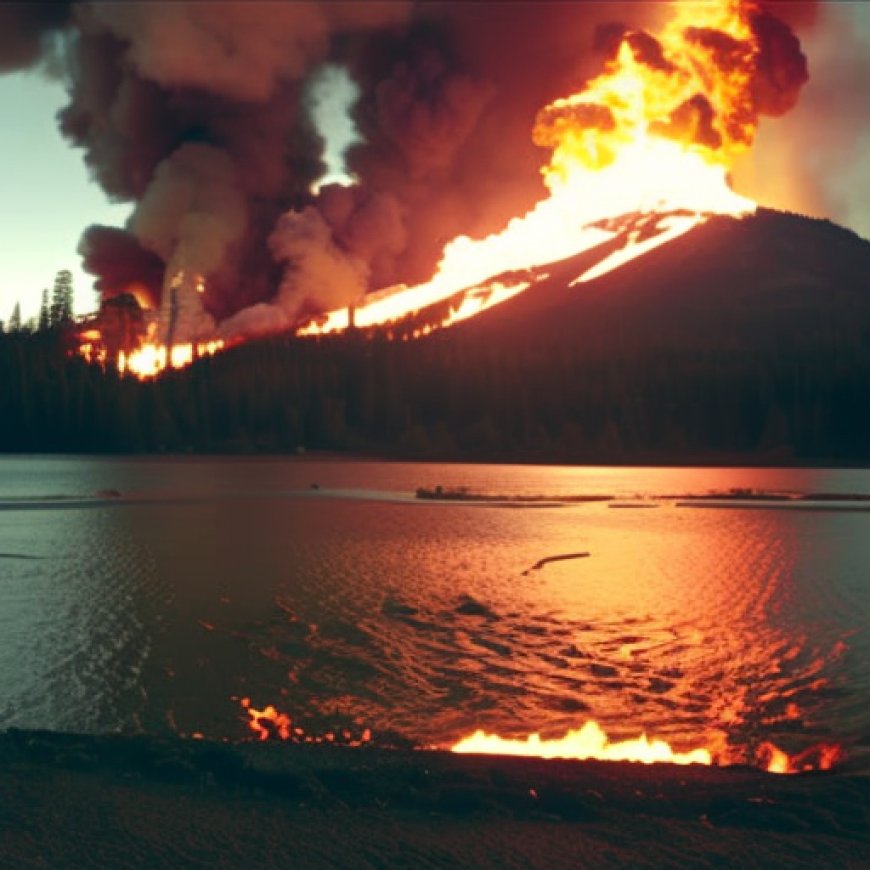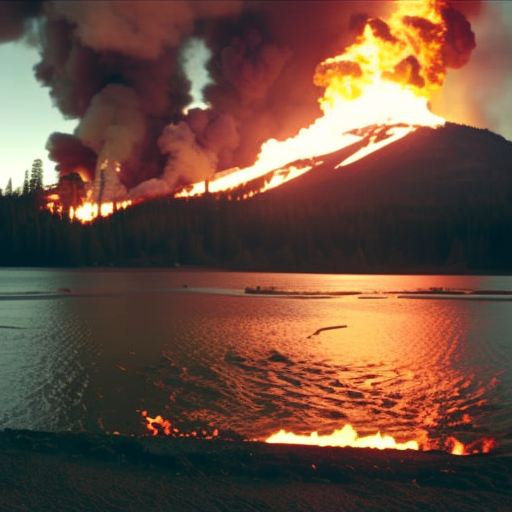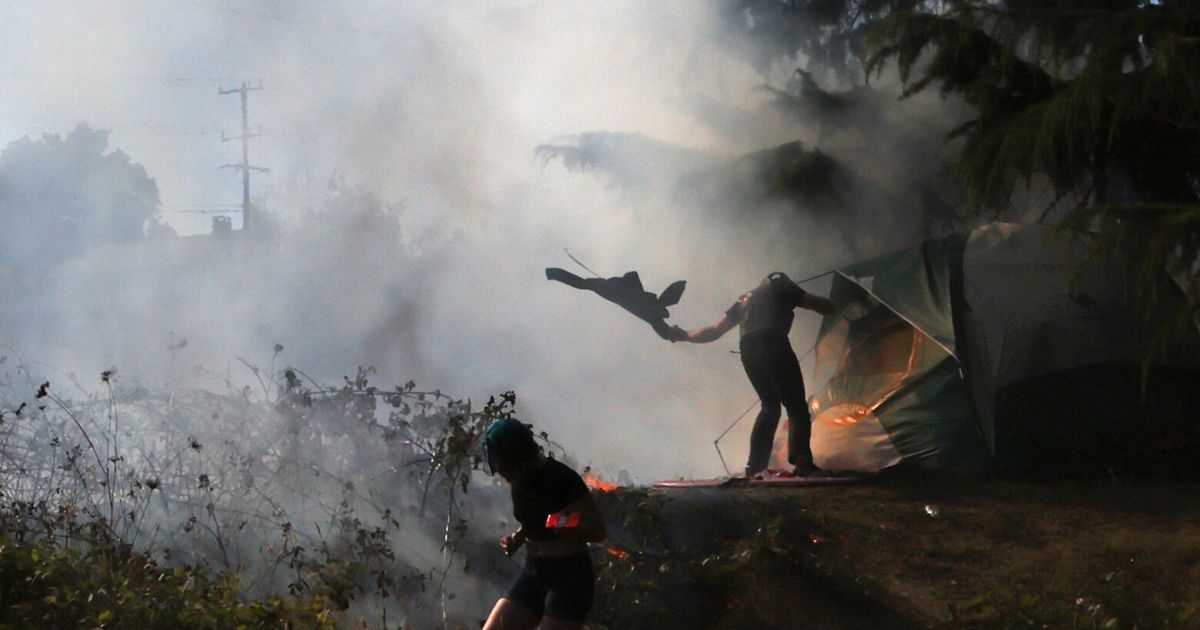Human-caused fires on the rise in Washington, Oregon
Forest Service, Seattle Fire Department report 'significant increase ... The Seattle Times


A “significant increase” in wildfires caused by humans in National Forest lands in Oregon and Washington

A “significant increase” in wildfires has been caused by humans in National Forest lands in Oregon and Washington this year, according to the U.S. Forest Service.
Between June 1 and July 28, 197 human-caused or undetermined-caused fire starts have been reported; the total number of fires in 2023 wasn’t immediately available. In 2022, 409 human-caused fires were reported in Oregon and Washington Forest Service land. In 2021, 494 were reported.
“The reasons behind this increase are unknown, but human-caused fires are preventable,” the agency said in a news release.
In Seattle, the Seattle Fire Department responded to 298 brush and bark fires in July, far more than the 113 brush fire responses in July 2022.
Public lands in the U.S. are managed by several state, local and federal agencies, including the Bureau of Land Management, the National Parks Service and the Bureau of Indian Affairs.
Officials warn the wildfire season in the Pacific Northwest could be worse than anywhere else in the nation. In June, the National Interagency Fire Center’s wildfire outlook showed all of Washington with above-normal fire potential from July through September.
Since Aug. 16, the Forest Service has issued restrictions on all campfires, smoking and other activities in forests. All campfires, charcoal or pellet fires are prohibited even in developed campgrounds. Portable cooking stoves and heating devices using bottled fuel are still allowed.
Local officials in Seattle have also stressed the importance of preventing brush fires within city limits as vegetation dries out. Here are some tips from the Seattle Fire Department:
How to ward off weather-related fires near homes
- Remove dead plants such as bushes or weeds as soon as possible.
- Clear pine needles and leaves from roofs and gutters.
- Consider removing long grass, weeds or tree limbs that touch the building or hang nearby.
- Keep lawns watered or cut short.
- Remove flammable wood piles or propane tanks.
- Do not light fireworks.
How to avoid starting a brush fire
- Dispose of smoking materials in proper receptacles and douse them in water. Don’t throw cigarettes in planters or out vehicle windows.
- Check whether chains or other metal parts are dragging from vehicles because they can create sparks.
- Keep tires inflated, since an exposed wheel rim can also cause sparks.
- Be careful when parked or driving through dry grass. Exhaust pipes can also cause fires.
SDGs, Targets, and Indicators
| SDGs | Targets | Indicators |
|---|---|---|
| SDG 11: Sustainable Cities and Communities | 11.5 By 2030, significantly reduce the number of deaths and the number of people affected and substantially decrease the direct economic losses relative to global gross domestic product caused by disasters, including water-related disasters, with a focus on protecting the poor and people in vulnerable situations | – Number of brush and bark fires in Seattle – Number of fire responses by the Seattle Fire Department |
| SDG 13: Climate Action | 13.1 Strengthen resilience and adaptive capacity to climate-related hazards and natural disasters in all countries | – Number of wildfires caused by humans in National Forest lands in Oregon and Washington – Increase in the number of human-caused fires over the years |
| SDG 15: Life on Land | 15.3 By 2030, combat desertification, restore degraded land and soil, including land affected by desertification, drought and floods, and strive to achieve a land degradation-neutral world | – Number of wildfires in National Forest lands in Oregon and Washington – Increase in the number of human-caused fires over the years |
1. Which SDGs are addressed or connected to the issues highlighted in the article?
SDG 11: Sustainable Cities and Communities
This SDG is connected to the article as it emphasizes the need to reduce the number of deaths, people affected, and economic losses caused by disasters. The article mentions the increase in brush and bark fires in Seattle, highlighting the importance of preventing fires within city limits.
SDG 13: Climate Action
This SDG is addressed in the article as it focuses on strengthening resilience and adaptive capacity to climate-related hazards and natural disasters. The article mentions the significant increase in wildfires caused by humans in National Forest lands, indicating the need for climate action to prevent and mitigate such disasters.
SDG 15: Life on Land
This SDG is connected to the article as it aims to combat desertification, restore degraded land and soil, and achieve a land degradation-neutral world. The article highlights the increase in human-caused fires in National Forest lands in Oregon and Washington, indicating the degradation of land and the need for restoration efforts.
2. What specific targets under those SDGs can be identified based on the article’s content?
Target 11.5: By 2030, significantly reduce the number of deaths and the number of people affected and substantially decrease the direct economic losses relative to global gross domestic product caused by disasters, including water-related disasters, with a focus on protecting the poor and people in vulnerable situations.
The article highlights the increase in brush and bark fires in Seattle, which can lead to deaths, people being affected, and economic losses. Target 11.5 emphasizes the need to reduce these impacts caused by disasters.
Target 13.1: Strengthen resilience and adaptive capacity to climate-related hazards and natural disasters in all countries.
The article mentions the significant increase in wildfires caused by humans in National Forest lands in Oregon and Washington. Strengthening resilience and adaptive capacity to such climate-related hazards and disasters is essential to address Target 13.1.
Target 15.3: By 2030, combat desertification, restore degraded land and soil, including land affected by desertification, drought, and floods, and strive to achieve a land degradation-neutral world.
The article highlights the increase in human-caused fires in National Forest lands, indicating the degradation of land. Target 15.3 emphasizes the need to combat desertification, restore degraded land and soil, and achieve a land degradation-neutral world.
3. Are there any indicators mentioned or implied in the article that can be used to measure progress towards the identified targets?
The article provides indicators that can be used to measure progress towards the identified targets:
– Number of brush and bark fires in Seattle: This indicator can measure progress towards Target 11.5 by tracking the number of fires and assessing whether there is a decrease over time.
– Number of fire responses by the Seattle Fire Department: This indicator can also measure progress towards Target 11.5 by monitoring the number of fire responses and evaluating if there is a decrease in incidents.
– Number of wildfires caused by humans in National Forest lands in Oregon and Washington: This indicator can measure progress towards Target 13.1 by monitoring the number of wildfires caused by humans and assessing if there is a decrease over time.
– Increase in the number of human-caused fires over the years: This indicator can also measure progress towards Target 13.1 by analyzing the trend of human-caused fires and evaluating if efforts to strengthen resilience and adaptive capacity are effective.
– Number of wildfires in National Forest lands in Oregon and Washington: This indicator can measure progress towards Target 15.3 by tracking the number of wildfires and assessing if there is a decrease over time.
– Increase in the number of human-caused fires over the years: This indicator can also measure progress towards Target 15.3 by analyzing the trend of human-caused fires and evaluating if actions to combat desertification and restore degraded land are successful.
4. SDGs, Targets, and Indicators
| SDGs | Targets | Indicators |
|---|---|---|
| SDG 11: Sustainable Cities and Communities | 11.5 By 2030, significantly reduce the number of deaths and the number of people affected and substantially decrease the direct economic losses relative to global gross domestic product caused by disasters, including water-related disasters, with a focus on protecting the poor and people in vulnerable situations | – Number of brush and bark fires in Seattle – Number of fire responses by the Seattle Fire Department |
| SDG 13: Climate Action | 13.1 Strengthen resilience and adaptive capacity to climate-related hazards and natural disasters in all countries | – Number of wildfires caused by humans in National Forest lands in Oregon and Washington – Increase in the number of human-caused fires over the years |
| SDG 15: Life on Land | 15.3 By 2030, combat desertification, restore degraded land and soil, including land affected by desertification, drought and floods, and strive to achieve a land degradation-neutral
Behold! This splendid article springs forth from the wellspring of knowledge, shaped by a wondrous proprietary AI technology that delved into a vast ocean of data, illuminating the path towards the Sustainable Development Goals. Remember that all rights are reserved by SDG Investors LLC, empowering us to champion progress together. Source: seattletimes.com
Join us, as fellow seekers of change, on a transformative journey at https://sdgtalks.ai/welcome, where you can become a member and actively contribute to shaping a brighter future.
|








